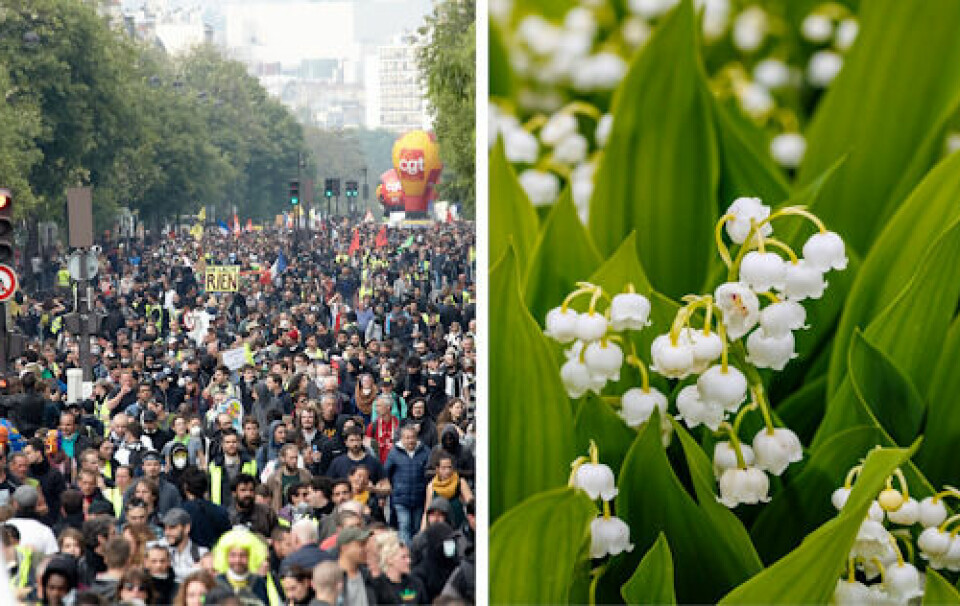-
Travellers risk extra costs under new Eurotunnel ticket rule
Some fare options are less flexible and less forgiving of lateness
-
May will be difficult month for train travel in France, warns minister
Two major train unions are threatening to strike and are ‘not willing to negotiate’, he says
-
New ski night train will link Paris to the French Alps
The Travelski Night Express will begin service this December and start selling tickets in May
French movie set with a backstory worthy of any film
Location for Cinderella retelling Ever After and 1967 horror film Eye of the Devil has a dramatic history all of its own

Hautefort Château, in Dordogne, is often used as a location by film-makers, but its own story would make for a film plot.
Belonging to the Born-Hautefort family from 1160 to 1398, it has been destroyed and rebuilt multiple times.
Richard the Lionheart besieged and destroyed it in 1183, but the owner Bertran de Born rebuilt it.
In 1600, renovations to remodel the entire place were begun and continued sporadically until 1695, by which time it had increased in size, acquired two imposing new towers, a regal staircase and a host of other features.
Unlike many other chateaux, it survived the French Revolution intact, and was still owned by the same family until 1887 when the last scion of the name died. Three years later the chateau was sold to an engineer who had worked on the Panama Canal, called Bertrand Artigue.
Outraging local opinion, he had most of the mortal remains of the previous owners removed to a chapel in the village, but others he simply threw away. He then launched into another series of ambitious renovations, but when he died unexpectedly in 1908 the entire building was emptied, and the contents were sold off, along with the surrounding lands and estate.
In 1929 the Baron and Baronne de Bastard bought the chateau and renovated it. It opened to the public in 1958, and in 1965 the roof was renewed and the final touches were put to the restoration project.
It was – by all accounts – glorious, but at a party in August 1968 two guests snuck upstairs for a cigarette and burnt the entire place to the ground.
Photographs show an inferno which was impossible to extinguish. By morning, the new roof was gone, the staircase, the contents, the wooden floors, the doors, windows had all been burned to ashes. There was nothing standing but an empty, blackened shell. One tower partially escaped the blaze but the building was in a parlous state.
“With time and money both in short supply, the interior was rebuilt in grey concrete,” explained Marie Maitrepierre, director of the chateau. “The interior walls, the floors, the roof, everything was reconstructed in concrete, and that’s the way most of it remains today.”
The chateau now belongs to Michel and Hélène David-Weill, who preside over the foundation which runsit. But the drama doesn’t end there. In August 2013 a storm damaged the roof so badly that around 60,000 slates had to be replaced.
“There are no plans to carry out any further renovations,” says Marie Maitrepierre. “The intention is simply to maintain it.”
The exterior has long been used as a film location, most notably for the Cinderella retelling Ever After staring Drew Barrymore, and for 1967 horror film, Eye of the Devil, with David Niven and Sharon Tate.
“Film-makers have been working here now for 50 years. Originally it was mainly cinema, but now increasingly television crews come.
“They mainly make historic films but they sometimes use the underground kitchens as dungeons in modern films.
“Directors appreciate the absolute quiet, and the views which are completely unspoiled, and we also have a wonderful park which is great for combat.
“The exteriors often double for Versailles, and they use our 17th- and 18th-century rooms when they don’t want to build their own sets.”
The so-called 17th and 18th century rooms are, of course, modern replicas constructed inside the concrete. If you look closely, you’ll see that the panelling and the plasterwork are far more theatrical than historical.
“But what we have discovered is that due to the tragic history, around two thirds of the chateau still consisted of vast empty concrete spaces, which are ideal places to build film sets – which is what happened when director Albert Serra came here to film La Mort de Louis XIV.
“They built the entire set inside the chateau, and because they left it here, we’ve opened it to the public.
“Crews stay in local gîtes, and when film crews are working here, although we can close for them, we usually only close the set... which is important for us.
“People like to come when a film crew is working at the chateau. It’s an attraction. Cinema is international and appeals to all ages.
“We still get Americans coming on pilgrimage to see the place where Ever After was filmed – it’s the only film in which you see the entire property from the sky.
This summer, the chateau is running a programme of cinema-related activities and events aimed at all the family. (Also don’t miss picturesque Hautefort village.)
























